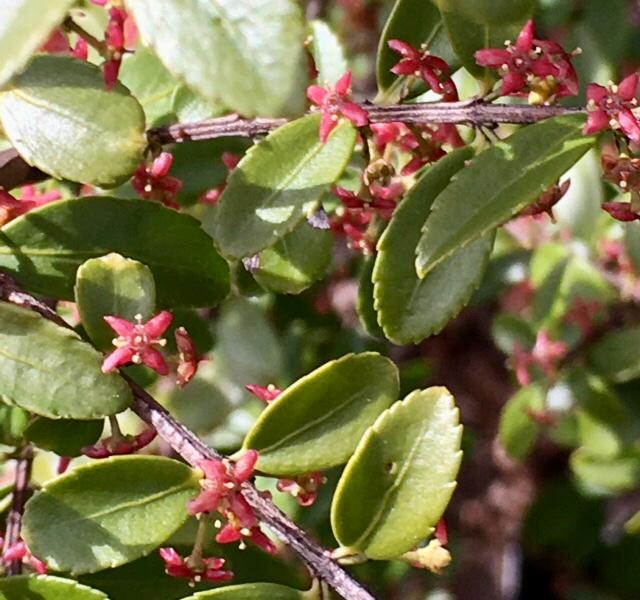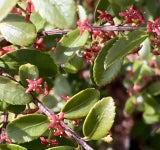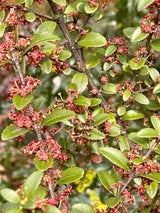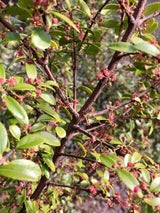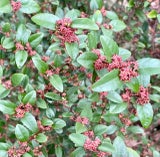- Plant IDs
- >
- ID By Colour
- >
- Red Flowers
- >
- Paxistima myrsinites
Paxistima myrsinites
Common name: False box, Oregon boxleaf
Paxistima myrsinites is native to western North America from British Columbia to California and east to Texas. This small evergreen shrub grows in forests, often in the understory, and resembles the cultivated boxwood.
You have to look right inside false box to see its magical miniature world. Its stems have many four-angled branches with oppositely arranged oval leaves. These shiny, dark-green leaves (3 cm/1 in long) look good year-round. They are thick, leathery, toothed and either pointed or round-tipped. The tiny maroon flowers (just 3-4 mm/1/8 in wide) are fascinating. Each has four petals and four stamens and are held in clusters in the leaf axils along the reddish-brown branches. The stamens are at the outer edge of a flattened disk, while the ovary is sunken in the middle.
The genus name ‘Paxistima’ is Greek for ‘thick stigma’, and the specific epithet ‘myrsinites’ for ‘myrtle’. Its leaves resemble those of the Myrtle family. Meriwether Lewis collected the first specimen of this plant for science in 1805.
Southern interior First Nations used false box medicinally. Slightly boiled leaves were made into a poultice for swellings and to reduce pain on any part of the body. An infusion of the plant could be used to heal broken bones, treat internal ailments and tuberculosis. Today, false box is sought for flower arrangements, and unfortunately its populations around cities are being degraded. Elk, moose, mountain sheep and grouse rely on their evergreen leaves for food.
The pictures were taken in early spring in VanDusen - in bed 43 by Shaughnessy Restaurant and bed 2B in front of the Floral Hall.
Text and photos by Hughie Jones
